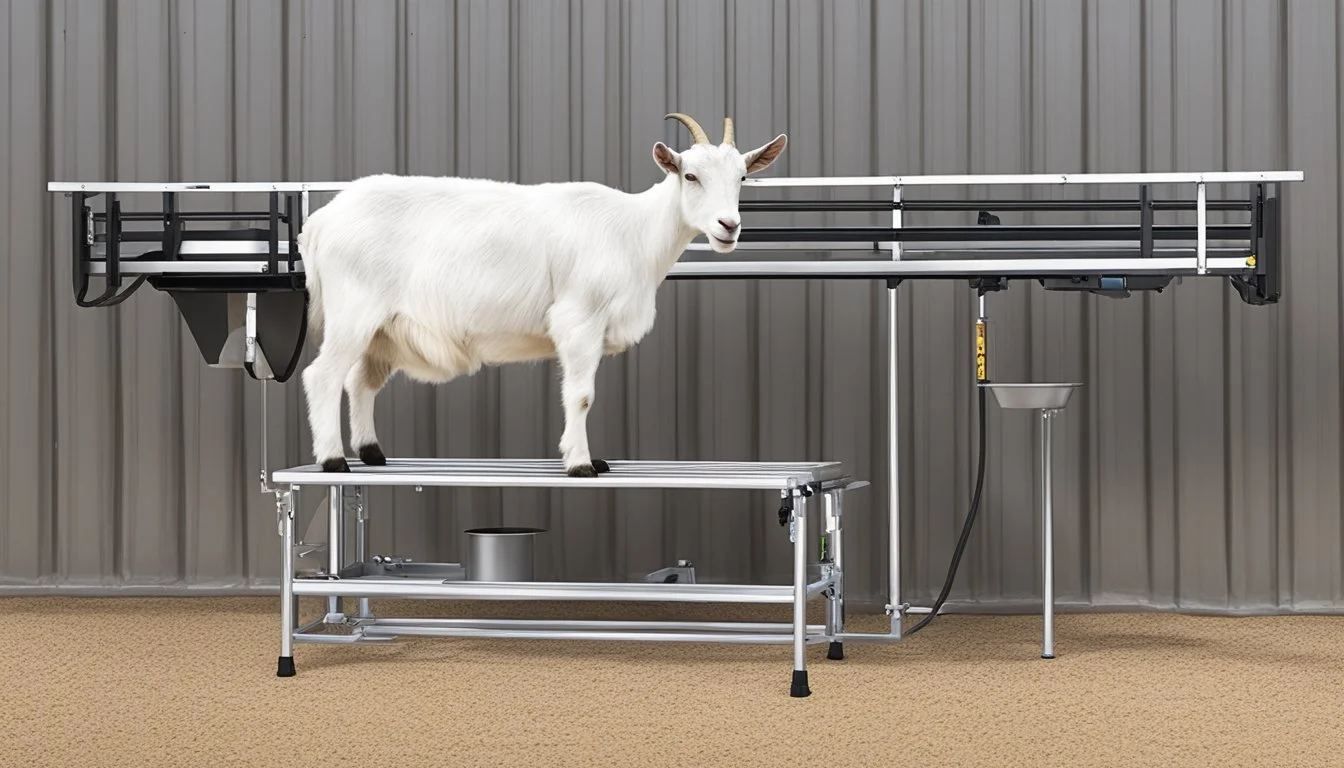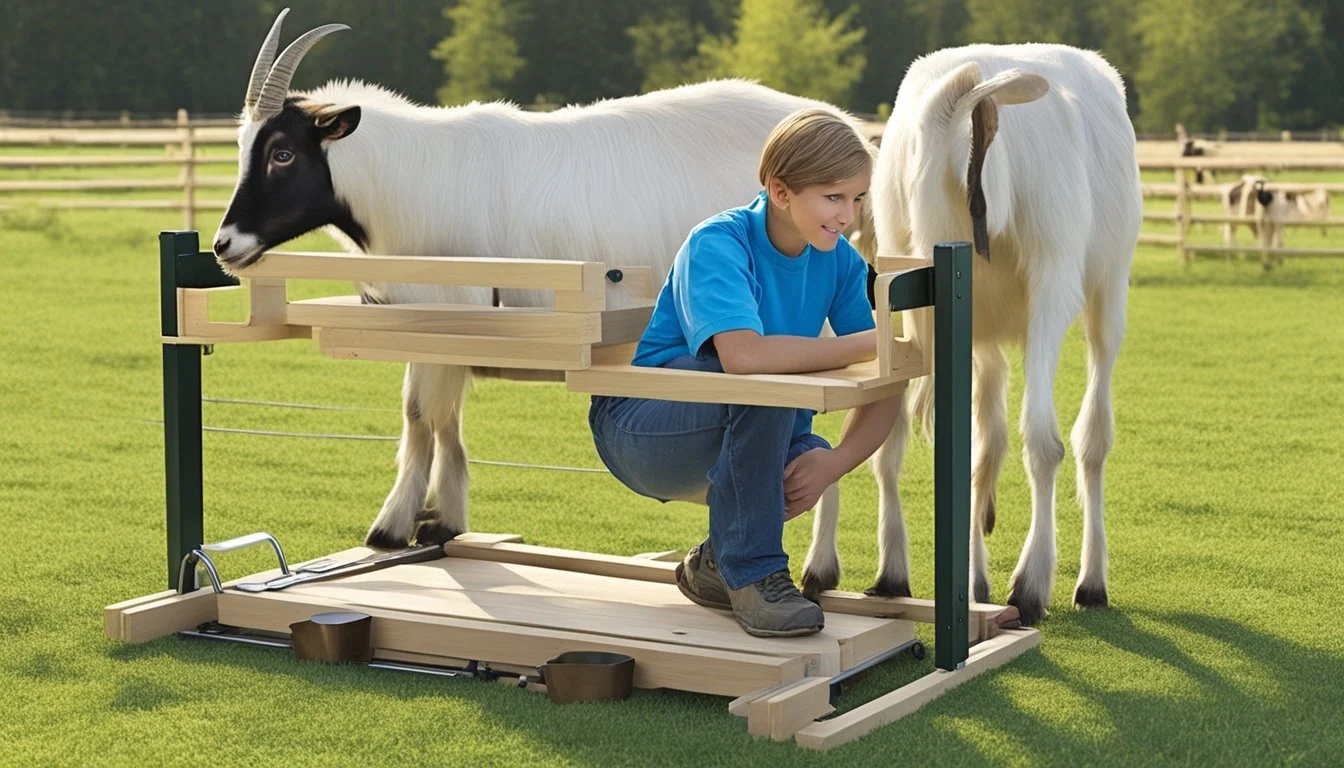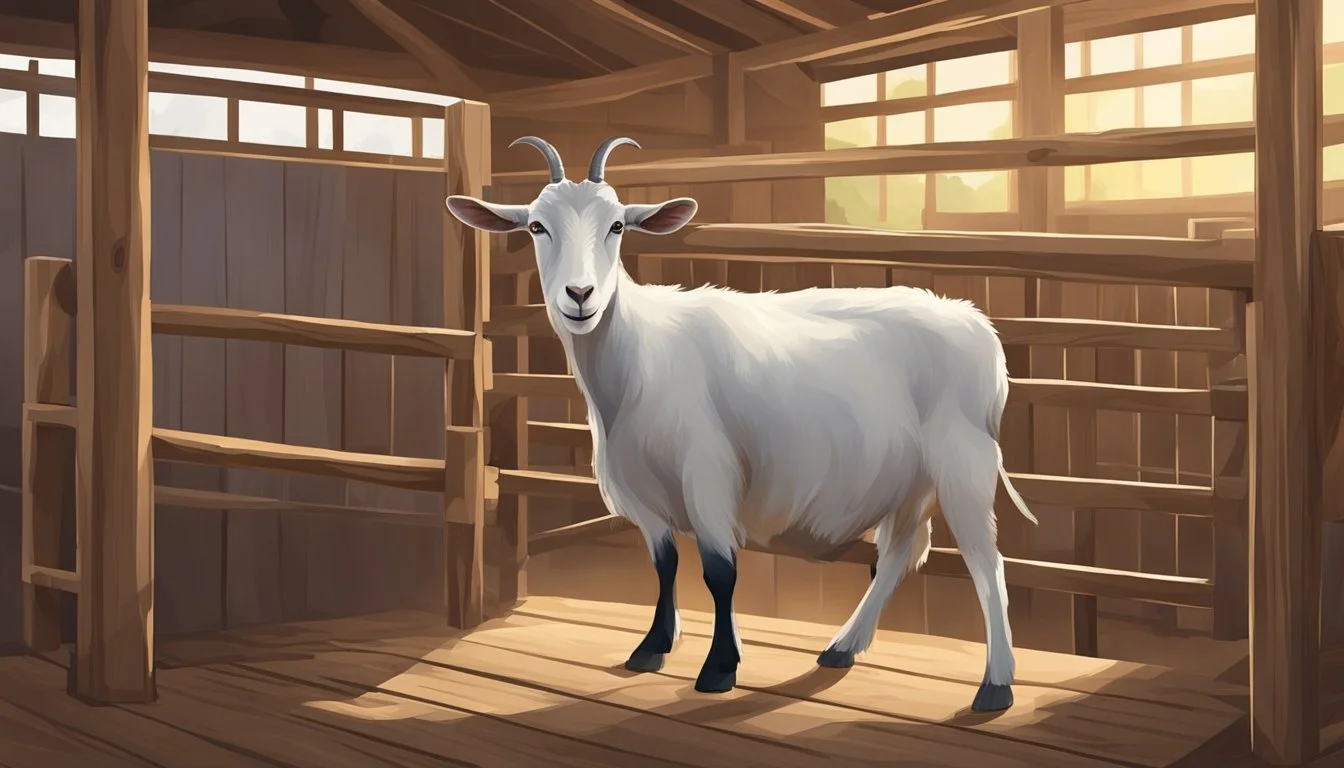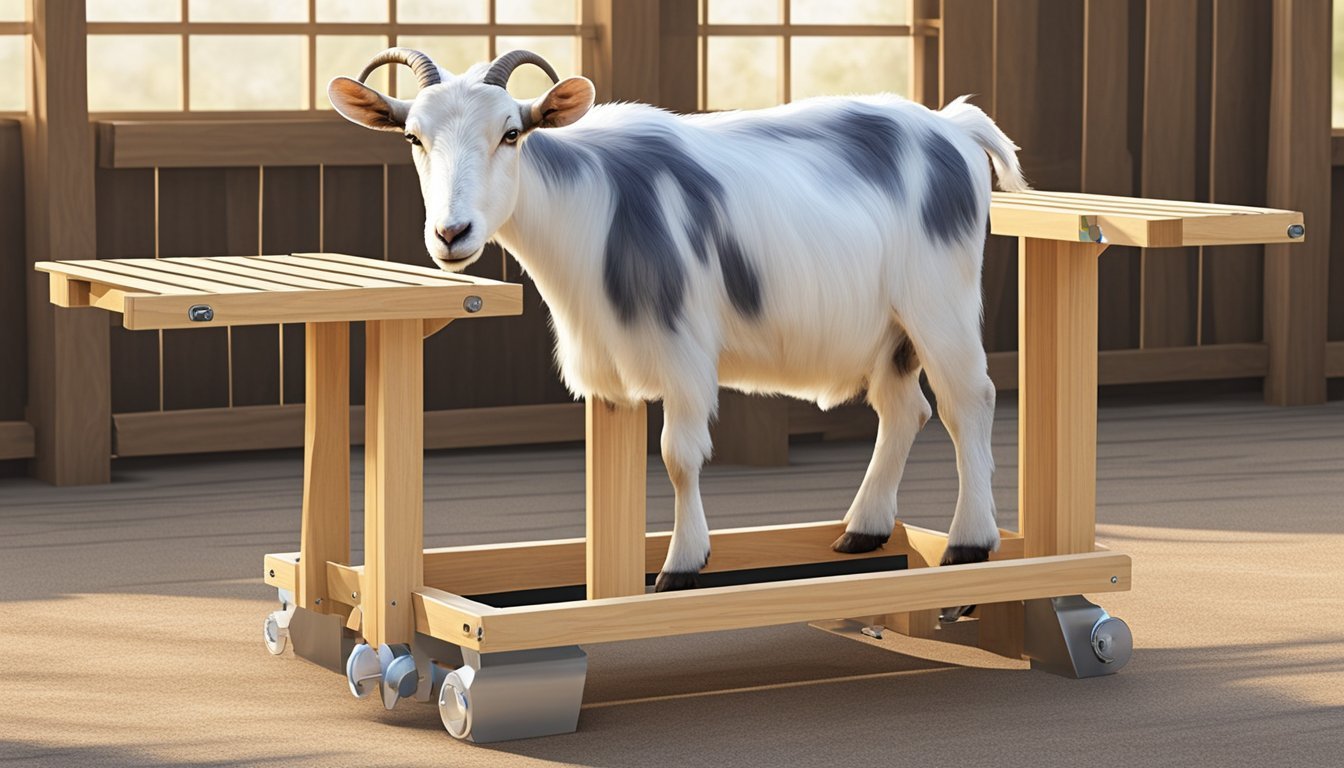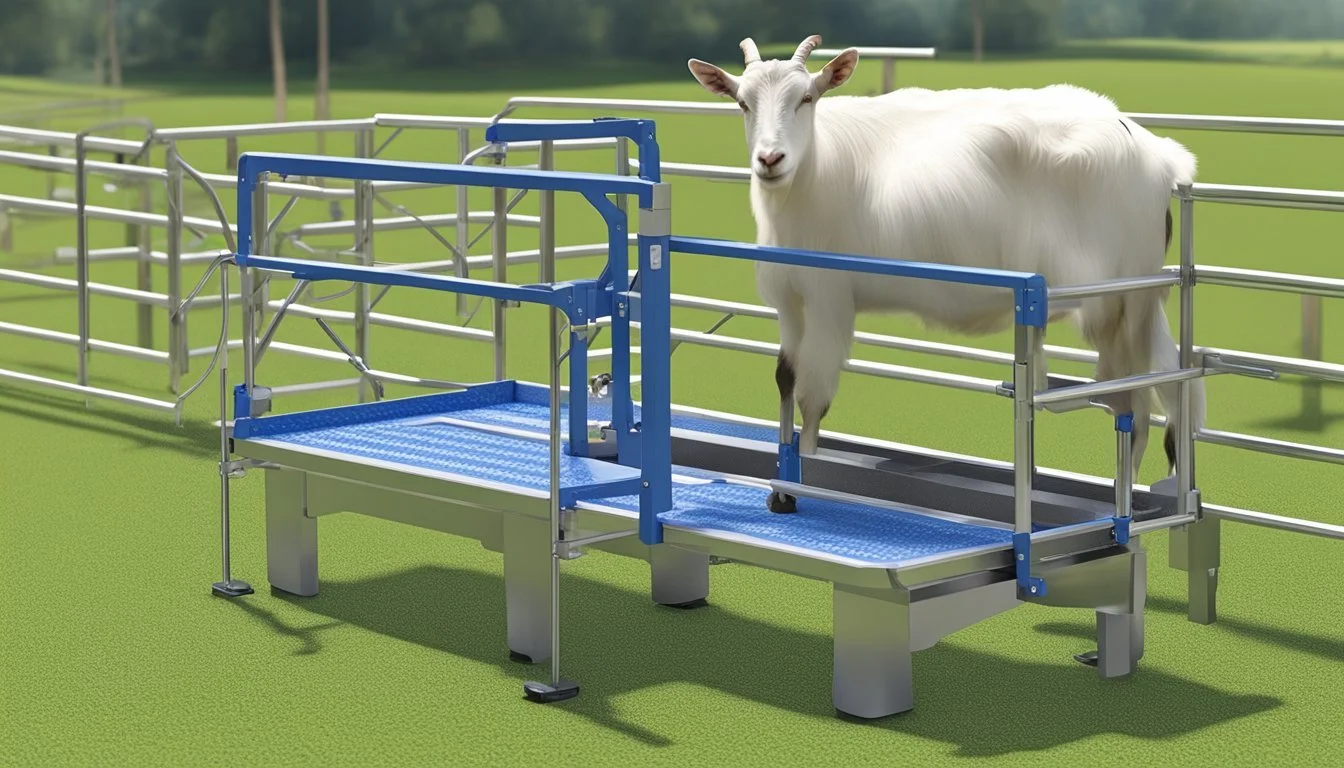The Ultimate Guide to Building a Secure Goat Milking Stand for Efficient Dairy Operations
Building a secure goat milking stand is essential for the safety and comfort of both the goat and the milker. The right milking stand not only facilitates an easier milking process by keeping the goat steady and calm, but it also reduces the risk of injury to the animal and helps prevent contamination of the milk. With proper planning and execution, anyone can construct a milking stand tailored to their needs using readily available materials.
When selecting materials for a goat milking stand, durability and functionality must be prioritized. Wood is a common choice due to its strength and ease of use, while metal stands offer increased stability and longevity but require welding skills. PVC, although less common, provides a lightweight and rust-resistant alternative. Each material comes with its unique set of advantages that must be carefully weighed against the specific needs of the farm and the goats.
The design and construction of the stand must account for the size and behavior of the goats to ensure a snug fit without causing discomfort. Adjustable headlocks, sturdy base, and ramps for easy access are all features that contribute to a successful milking experience. Personalizing the stand with extra features like a feed trough can further enhance the effectiveness of the stand. By following proven plans and incorporating personal adjustments, a highly-functional goat milking stand can be realized.
Understanding the Basics of Goat Milking
Milking goats is a critical process for dairy production and requires a deep understanding of the milking process, the behavior of goats, and the methods available. From selecting the right breed to choosing between using a milk stand and hand milking, this section will equip readers with the necessary information.
Importance of Milking Goats
Milking goats is not just an agricultural task, but an essential process to harness the nutritional value of goat milk. Dairy goats must be milked regularly to maintain their health and productivity. The process helps to prevent mastitis, a common problem in lactating goats. It is also crucial for the production of cheese, yogurt, and other dairy products that are cherished around the world.
Goat Milking Fundamentals
To milk a goat effectively, one must ensure the comfort and safety of both the animal and the milker. Goat milking should be carried out with clean equipment to avoid contamination. The udder should be cleaned and dried before milking, and the teats should be massaged to stimulate the "let-down" reflex. It's essential to milk with a gentle, rhythmic motion, completely emptying the udder to maintain milk production and udder health.
Selecting the Right Goat Breed
The choice of goat breed significantly impacts milk yield, quality, and the ease of milking. Popular dairy goats include the LaMancha, with its high butterfat content, and the Saanen, known for its large volume of milk production. The Nubian breed, with its distinctive long ears, provides rich milk ideal for cheese-making. Each breed has specific needs and characteristics that should be considered when designing a milking routine.
Milk Stand vs. Hand Milking
There are two prevalent methods of milking goats: using a milk stand or hand milking. A milk stand can make the process more efficient and safer by keeping the goat secure during milking. It is built to accommodate the goat's size, with an area for feeding to keep the animal calm and distracted.
On the other hand, Hand milking offers a direct, personal approach and can be more cost-effective, though it requires skill and can be more time-consuming. It involves manually squeezing the teats to extract the milk, an approach that can be more suitable for those with a small number of goats.
Designing Your Goat Milking Stand
Before embarking on building a goat milking stand, a clear design plan is essential for creating a functional and secure stand that will enhance the milking process for both the goat and the milker.
Determining the Optimal Size
The size of the milking stand should accommodate the goat comfortably, allowing space for movement without risk of escape or injury. The stand typically includes a deck area where the goat stands during milking. A standard size for the deck would be approximately 20 inches wide and 48 inches long, which caters to various goat sizes. Builders can adjust these dimensions as needed to fit their specific goat breed requirements.
Finding the Perfect Height
The height of a goat milking stand is crucial for the milker's comfort, especially during extended milking sessions. It is recommended that the decking where the goat stands be positioned around 19 to 25 inches off the ground. This range is based on an ergonomically comfortable height for the average person to sit and milk without straining their back or shoulders.
Choosing Materials and Tools
For a durable and long-lasting goat milking stand, quality materials are a must. Wood is a common choice due to its sturdiness and ease of working with.
Materials:
Wood: Typically 2x4s and plywood.
Screws: 1" screws for attaching top parts, longer screws for frame assembly.
Optional: Construction adhesive for augmenting screw joints.
Tools:
Saw: For cutting wood to the desired dimensions.
Screwdriver or drill: For assembling parts with screws.
Measuring tape: For accurate measurement of wood and components.
Square: To ensure all angles are correct and the stand is perfectly level.
Choosing the right materials and tools enhances the stand's structural integrity and ensures safety during use.
Step-by-Step Construction Guide
Constructing a goat milking stand requires precision and attention to detail. This guide outlines the practical steps in building a stable and functional stand, ensuring a safe and efficient milking process.
Preparation and Material Acquisition
Before starting the construction, collect all necessary materials and tools. The typical materials needed include:
2 x 4s or 2 x 6s for the frame
¾" plywood for the platform
Screws or bolts for assembling the pieces
Wood sealant or paint for protection
Hinges for the stanchion (if movable)
Most of these can be sourced from local hardware stores or can be repurposed from scrap lumber. Ensure the tools at hand should include a saw, drill, screwdriver, and a measuring tape.
Building the Frame and Platform
The frame serves as the foundation of the milking stand, and it must be sturdy. Begin by:
Cutting the 2 x 4s or 2 x 6s to the desired length, typically creating a 24" x 48" rectangular frame.
Assemble the frame using screws, creating a strong base.
Cut the ¾" plywood to match the frame size, and fasten it on top, forming a smooth platform.
Finish the wood with a sealant or paint to enhance durability and protect against moisture.
Constructing the Stanchion and Feed Trough
The stanchion and feed trough are critical for securing the goat and keeping it occupied during milking. Proceed by:
Designing the stanchion to comfortably fit the goat's neck; it should close securely but without causing distress.
Attach the stanchion to the platform using hinges if a movable stanchion is desired.
Create a feed trough at the head of the stand, encouraging the goat to remain still. Attach the trough securely to avoid any movement during milking.
Assembling and Attaching the Legs
Lastly, focus on the legs of the milking stand, which must provide a stable base:
Cut four legs from the 2 x 4s, ensuring they are of equal length to avoid wobbling.
Attach each leg to the corners of the frame using screws or bolts.
Check and ensure that the stand is level; make adjustments as necessary to construct a balanced stand.
By following these steps meticulously, one can build a goat milking stand that is secure and facilitates an optimal milking experience.
Enhancing Comfort and Safety
When building a goat milking stand, comfort for the animal and safety for both the goat and handler are paramount. Proper cushioning and support, along with adjustable safety measures, are essential for a secure milking process.
Cushioning and Support Features
Cushioning features reduce stress on the goat's knees and joints during milking, leading to a more relaxed animal and a more efficient milking process. A padded headrest and neck support can also enhance comfort. It's crucial for the stand to be sturdy to prevent wobbling, which could create anxiety or discomfort for the goat. A well-built stand supports the goat's weight evenly and offers a stable platform.
Headrest Padding: Dense foam covered with durable material
Knee Padding: Rubber mats or foam pads on the platform
Safety Measures and Adjustments
A secure milking stand includes features to minimize the risk of pain or injury. Restraints should be adjustable to comfortably fit different-sized goats, and all surfaces should be smooth and free of protruding nails or screws. Railings or barriers around the platform can prevent falls, ensuring that both the goat and handler remain safe throughout the milking process.
Adjustable Restraints: Collars or straps that can be tailored to individual goats
Smooth Surfaces and Edges: Regular inspection and maintenance to avoid potential hazards
Incorporating these elements into the design of a goat milking stand will significantly improve the milking experience by promoting a calm and secure environment for the goats and their handlers.
Customization and Accessories
By incorporating select customizations and accessories into a goat milking stand, one can maximize both the comfort and efficiency of the milking process.
Feed and Water Attachments
To encourage goats to remain calm and occupied during milking, a feed box attachment proves essential. One can affix it at the front end of the stand, ensuring easy access for the goat to its feed. It is important to consider the feed box design that prevents spillage and can be easily refilled.
For hydration, incorporating a water holder is a prudent choice. Owners should ensure the water attachment is stable to avoid any spills and within the goat's reach without obstructing the milking process.
Adaptive Features for Different Goat Sizes
Due to the variety of goat breeds, adjustable headpieces and side rails become indispensable for a secure fit. These features help accommodate goats of different sizes safely, ensuring they are neither too loose to escape nor too tight to cause discomfort. A standard milking stand can be modified with:
Telescopic bars for width adjustment
A variety of headpiece settings for different neck lengths
Through these adaptable features, whether one is undertaking a DIY project or purchasing a pre-made stand, the safety and comfort of various goat breeds can be assured.
Finishing Touches
After assembling the goat milking stand, the final steps are crucial to ensure a smooth, safe surface for the goats and a lasting durability for the stand itself.
Sanding and Edge Rounding
It is vital to begin by meticulously sanding down the entire structure, focusing on the milking stand's surfaces that come into contact with the goats to prevent injury from sharp edges. Specifically, one can use medium to fine-grit sandpaper to smooth out all wooden components, such as plywood or cedar fence pickets. The corners and edges should be rounded off to create a more animal-friendly stand. The sanding process also prepares the wood for better adhesion of stains or paints.
Applying Stain or Paint for Durability
The choice of finishing—whether stain or paint—largely depends on the desired aesthetic and the level of protection required against the elements. For example:
Stain: enhances the natural beauty of wood like cedar pickets, while providing a moderate level of protection.
Apply a coat of exterior-grade wood stain using a brush or cloth, making sure to cover all surfaces evenly.
Allow it to dry completely as per the manufacturer's instructions.
Paint: delivers a highly durable and protective layer that guards against moisture and wear.
Opt for an exterior-grade paint, especially when using materials like plywood that are more susceptible to weather damage.
A primer coat can be applied first, followed by at least two coats of paint, drying thoroughly between applications.
Both finishes can significantly extend the life of the goat milking stand when applied correctly, protecting investments in PVC and other materials utilized in the construction.
Maintenance and Upkeep
To ensure the longevity and functionality of a goat milking stand, regular maintenance and upkeep are essential. These practices not only protect your investment but also provide a clean and safe environment for both the goats and the milker.
Routine Cleaning Recommendations
Daily Cleaning Tasks:
Sweep and remove any debris from the surface to prevent the buildup of dirt.
Sanitize surfaces that come into direct contact with the goats or milk using a mild disinfectant.
Weekly Cleaning Tasks:
Thoroughly wash the stand with soapy water, rinse well, and dry to prevent any bacterial growth.
Inspect the stand for any signs of wear and tear that could compromise its integrity or the animal's safety.
Repair and Replacement Tips
Repair Tips:
Check all joints and fasteners regularly for any signs of looseness or damage, and tighten or replace as necessary.
Wooden components should be inspected for splinters or cracks. Sand down splinters and fill in small cracks with wood filler.
Replacement Tips:
Replace components showing significant wear or damage immediately to uphold a sturdy structure.
Consider material fatigue, especially in high-stress areas, and preemptively reinforce or replace parts as needed to avoid unexpected failures.
Regular maintenance ensures that the goat milking stand remains a reliable piece of equipment in daily farming operations.
Additional Uses for Your Milking Stand
While primarily designed for milking, a durable goat stand offers versatility. Farmers can repurpose the structure for essential tasks such as grooming and health maintenance, as well as for practical applications within a homestead garden.
Grooming and Veterinary Care
A milking stand provides a stable platform for routine grooming procedures, making it easier to manage a goat's coat and hooves. Here's how a milking stand can be employed:
Hoof Trimming: Secure the goat for precise and safe hoof care.
Coat Care: Brushing and shearing become more manageable when the goat is restrained.
Health Check-ups: Regular veterinary tasks, like administering vaccinations or parasite control, are simplified.
This repurposing ensures that the investment in a milking stand extends beyond the milking process to overall goat welfare.
Integration into the Homestead Garden
Strategically placing the milking stand within the garden can provide dual benefits:
Manure Collection: Collect and use goat manure as a high-quality garden fertilizer.
Feeding Programs: Integrate natural garden trimmings into the goats' diet when they are on the stand.
Employing the stand in this way enriches soil fertility while contributing to sustainable farm practices.
DIY Milking Stand Plans and Tutorials
In building a goat milking stand, a homesteader requires detailed plans and clear tutorials that cater to their skill level, be it beginner or more advanced. These resources lay out necessary materials and steps that prioritize safety and functionality.
Accessing Online Resources
One can find a range of online resources that provide free and purchasable plans for constructing a goat milking stand. Websites like A Butterfly House offer printable plans, often with step-by-step guidance and materials lists. YouTube tutorials offer visual guidance; channels dedicated to farming and goat care can walk you through the process.
For those who learn best by watching, the How To Build A Goat Milking Stand DIY - Dimensions Included video on YouTube is an excellent resource. It offers a complete visual walkthrough for building a stand. The creator supports viewers by explaining each step, ensuring both clarity and confidence in following the procedure.
Beginner and Intermediate Projects
For beginners, it’s crucial to start with a project that doesn’t overwhelm. Materials are often simple, like 2x4s, and tools required are minimal. The Fias Co Farm Goat Milking Stand provides a straightforward design, valuable for those just starting in the craft of building farm equipment. Here's an essential overview:
Frame and Legs: Use 2x4s cut to the desired height for the homesteader's comfort and goat's size.
Bracing: Angled 2x4s reinforce stability to prevent the stand from toppling or swaying during milking.
Platform: A flat, level surface is crucial for the goat's comfort; it should be free from sharp edges.
Intermediate plans often incorporate additional features, like adjustable head stanchions or collapsible designs for easy storage. The need for a more complex skill set arises, such as precision cutting and the ability to ensure all parts are level and secure. Seasoned homesteaders must monitor fasteners like screws or bolts over time, tightening as necessary for maintaining a sturdy stand as suggested by the Ultimate Guide To Goat Milking Stand Plans.
By choosing a plan that matches their skill level, homesteaders can ensure a successful build that enhances their goat milking experience.



